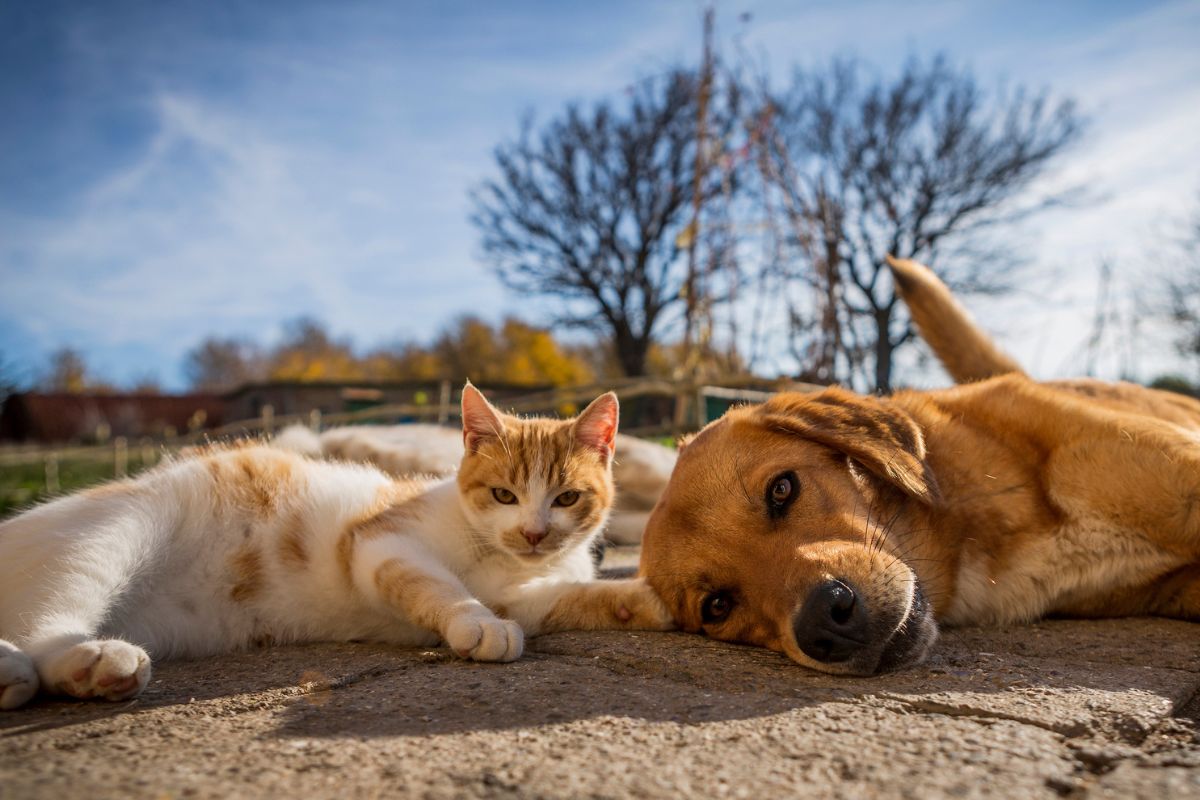Fleas are small, wingless insects known for their exceptional jumping ability and irritating bite. More than just a nuisance, fleas can cause health problems for your pet, including itching, allergies, skin infections, and the transmission of infectious or parasitic diseases, some of which can be transmitted to humans. Here’s how to keep your pet safe from fleas and how to treat a flea problem.
What do fleas look like?
Fleas are small and very quick moving, making them hard to spot. To the human eye, fleas look like little dark red or brownish ovals with legs underneath. If you see a flea, be prepared for it to jump or crawl away quickly.
Sometimes, you might not see the fleas themselves, but you may see evidence of them in the form of ‘flea dirt’ (flea faeces), which looks like regular dirt on your pet. The way to tell the difference is to place some on a wet tissue – flea dirt will stain the tissue red.
What do flea bites look like?
Check your dog’s skin carefully for signs of scratching or redness. These signs can indicate a flea infestation, although there are many other causes of skin disease, so it’s always best to consult your vet. Flea bites often appear as a red, bumpy rash, especially on the belly, groin, or base of the tail.
Can humans get fleas?
While fleas prefer their animal host, you and your family will likely get bitten if you have a heavy household infestation. Although fleas are unlikely to live on humans as they do on pets, they can transmit diseases such as cat flea typhus, which is another reason to maintain good flea control for your pets.
How do pets get fleas?
Pets typically get fleas from a contaminated environment, which could be indoors or outdoors. Fleas often hide in grass or outdoor spots, waiting for a host. It is possible for a flea to jump directly from one pet to another, but most fleas stick with a host once they find it. Fleas usually enter your home on an already infested pet, and just a few fleas can quickly lead to a full-blown infestation.
How can you tell if your pet has fleas?
If you see a flea or flea dirt on your dog or cat or its bedding, you can be sure there are more. Fleas can sometimes be hard to spot, so here’s a list of signs to look for.
- Scratching: This is the obvious one. The presence of fleas and their bites irritates the skin, so if your pet is scratching and gnawing at its skin more than you might expect, it may have fleas. There are various causes of scratching, so be sure to speak to your vet if they continue to scratch.
- Hair loss: Hair loss due to excessive scratching and grooming may be seen in some pets, particularly around the back legs and tail base.
- Irritated skin: Your pet’s skin may be red and sore because of their flea infestation. Pets with flea allergy dermatitis may also develop secondary skin infections.
- Pale gums: The loss of blood from a severe infestation of fleas can cause anaemia, resulting in pale gums. Anaemia due to fleas is rare, typically only seen in young puppies and kittens with very heavy flea infestations.
How to get rid of fleas on dogs and cats
Treat your pet with an effective flea treatment from the NexGard range. The rapid action kills adult fleas before they can lay eggs, helping to prevent ongoing infestations. Regular monthly treatment is recommended to keep your pet and home flea free.
- NexGard Chewables for Dogs: A monthly chew that protects against fleas, ticks and mites.
- NexGard SPECTRA Chewables for Dogs: Provides the most complete protection from fleas, ticks, mites and intestinal worms, all in one tasty, monthly chew.
- NexGard SPECTRA Spot-On Solution for Cats: Provides the most complete protection against fleas, ticks, ear mites, lungworm and intestinal worms (including tapeworm), all in one easy, monthly application.
When it comes to fleas, prevention is definitely better than cure.
See product label for full claim details and directions for use. ACVM registration No. A011040, A011184, A011852.
How to get rid of fleas in your house
- Wash bedding regularly: Use hot water and dry on high heat or in the sun to kill flea eggs and larvae.
- Mow grass and remove leaves: Keep your grass short and remove any piles of leaves or garden clippings.
- Vacuum carpets regularly: Vacuum carpets and rugs, especially in pet areas.
- Cover outdoor garbage bins: Prevent native animals from bringing fleas and ticks onto your property.
Getting rid of fleas requires persistence and a multifaceted approach. Treating your pet, cleaning your home, and maintaining a flea free environment can effectively eliminate fleas and keep your pet happy and healthy.
Always consult your vet for the best flea control preventative for your pet.







